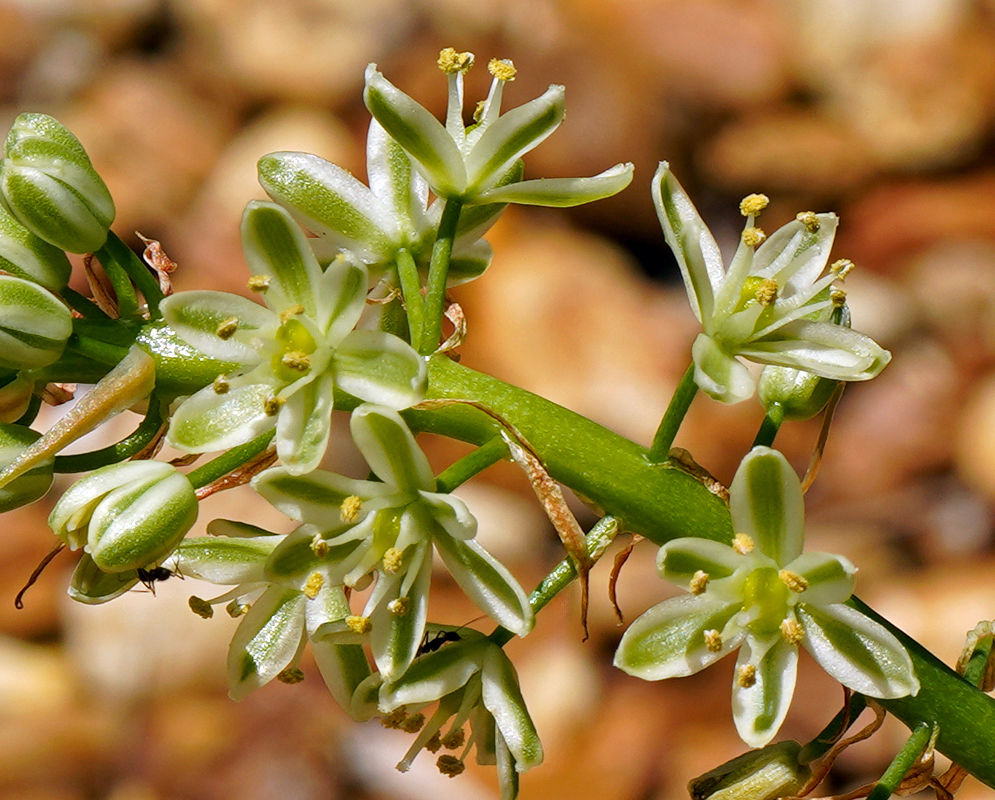This post has 11 Simple Fields-fields attached. Show fields.

Native to the eastern regions of South Africa, Albuca bracteata has become naturalized in parts of California and other subtropical zones. It typically grows in well-drained, rocky soils and forms from a large, underground bulb that occasionally produces bulbils around its base. This geophyte is summer-dormant and sends up flowering stalks during its active winter growth cycle. It exhibits a sympodial branching habit with flowers emerging in racemes from a tall, succulent peduncle. This species is drought-tolerant.
Its flowers are star-shaped and display three white petals and three white sepals, all marked with a distinct longitudinal green stripe. Each bloom has six yellow stamens with conspicuous pollen-bearing anthers and a short style emerging from a green ovary. The floral structure is actinomorphic, and the blossoms open sequentially along the inflorescence. Propagation is often done by separating the prolific bulbils that form around the base or along the scape. A few local sources in southern Africa describe a mucilaginous texture with a slightly bitter flavor when cooked, but reports on edibility vary, and it is not a common food source. Its unusual appearance and ability to produce plantlets directly from its flower stalk have given it the informal nickname "pregnant onion," despite not being a true onion or commonly eaten in culinary use. The plant is non-invasive and rarely escapes cultivation. Photographed in Florida.

